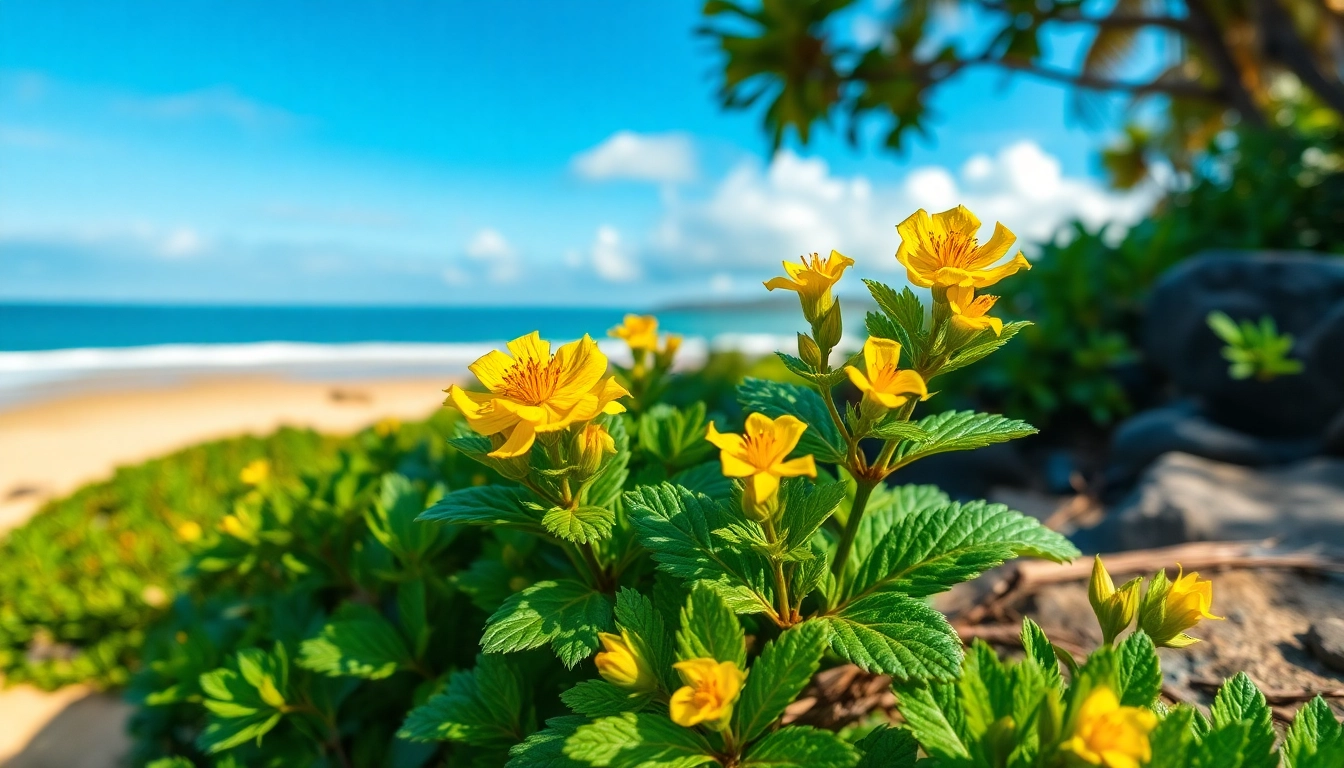Understanding Nohu: The Unique Tropical Plant
Nohu, a native plant to the Hawaiian Islands, known scientifically as Tribulus cistoides, has garnered attention not just for its botanical features but also for its integral role in the ecosystem and human culture. From its distinctive yellow flowers that bloom amidst its thorny leaves to its applications in traditional medicine, nohu is a fascinating illustration of nature’s adaptability and relevance. In this article, we will delve deeper into various aspects of nohu, exploring its features, habitats, uses, conservation efforts, and potential future developments.
What Is Nohu and Its Historical Significance?
Nohu has been a part of the natural landscape of Hawaii for centuries. Historically, it has been utilized by native Hawaiians for its nutritional and medicinal properties. Its resilience is showcased through its ability to thrive in harsh environments, which symbolizes strength and adaptability—a quality highly valued in Hawaiian culture. The significance extends beyond mere survival; nohu is often considered a plant of spiritual importance, featured in traditional practices and local stories.
The Botanical Features of Nohu
Nohu is characterized by its unique greenery, comprising spiny stems and small, intricately shaped leaves. The plant can grow up to 20 inches tall and often showcases vibrant yellow flowers. Its fruit, resembling thorny capsules, further aids in its propagation through animals that consume the fruit and spread the seeds. These features are not just decorative; they play a role in the plant’s survival and interaction with its environment, contributing to pollination and seed distribution.
Nohu in Hawaiian Culture and Tradition
Within Hawaiian culture, nohu has been embraced not only as a botanical marvel but also as a substance of cultural significance. Traditional uses include herbal remedies for various ailments, showcasing the profound knowledge of native plants amongst Hawaiians. The plant’s resilience is often reflected in local art, literature, and spiritual practices, and it holds a place as a symbol of heritage and strength in the face of adversity.
Habitats and Growth Conditions of Nohu
Where Can You Find Nohu in the Wild?
Nohu is predominantly found in the wild across the Hawaiian Islands, particularly in coastal areas where the soil tends to be sandy and well-drained. Its ability to adapt to urban environments has also led to sightings in gardens and parks. In essence, nohu flourishes in areas that allow for ample sunlight and moderate rainfall, thriving in conditions where other plants might struggle.
Optimal Growing Conditions for Nohu
To cultivate nohu, it’s essential to consider several factors: well-drained soil, plenty of sunlight, and careful watering practices. Nohu plants are drought-resistant, so overwatering is a common mistake among gardeners. Using organic compost can enhance growth and support the plant’s nutritional needs. Gardeners interested in growing nohu should also aim for planting during warm months to encourage successful germination and growth.
Nohu’s Role in Ecosystem Balance
Nohu plays a pivotal role in its ecosystem. It enhances soil health, serves as a food source for insects, and supports pollinators like bees and butterflies. The plant’s deep root system aids in preventing soil erosion, making it crucial in retaining soil integrity in coastal areas vulnerable to environmental changes. Additionally, as a native species, nohu supports biodiversity and contributes to habitat stability for various wildlife.
Health Benefits and Uses of Nohu
Medicinal Properties of Nohu
The medicinal properties of nohu have been recognized for centuries. Traditionally, it has been used to treat ailments such as urinary tract infections and as a diuretic. Contemporary studies suggest that compounds within the plant may possess antioxidant and anti-inflammatory properties, making it a topic of interest for researchers seeking natural alternatives to conventional medicine.
Culinary Applications of Nohu
Besides its medicinal uses, nohu has found its way into local culinary practices. Parts of the plant can be used in salads and other dishes, providing a unique flavor while also offering nutritional benefits. Chefs and home cooks alike have begun to explore the versatility of nohu in gourmet cooking, often highlighting its cultural significance alongside its culinary potential.
Nohu’s Nutritional Benefits Explored
The nutritional profile of nohu is impressive. High in fiber and low in calories, it serves as an excellent addition to a balanced diet. The plant also contains essential vitamins and minerals, including vitamin C and potassium, which contribute to overall health. Consuming nohu can aid in digestion and provide a refreshing option for those looking to enhance their diet with local ingredients.
Conservation Efforts for Nohu
Threats to Nohu’s Habitat
Despite its resilience, nohu faces several threats, including habitat destruction due to urban development and invasive species competition. Climate change has also begun to impact the native flora in Hawaii, with rising sea levels and increased storm intensity posing risks to the coastal ecosystems where nohu thrives.
Active Conservation Projects Involving Nohu
Conservation efforts are underway to protect nohu and its habitats. Local organizations are engaged in activities such as reforestation, the removal of invasive species, and the promotion of native plant gardening. These initiatives not only safeguard nohu but also enhance awareness about the ecological significance of native flora in Hawaii.
How You Can Support Nohu Preservation
Individuals can contribute to the preservation of nohu by participating in local conservation programs, supporting native plant nurseries, and educating others about the importance of nurturing local ecosystems. Advocating for policies that protect natural habitats is also crucial for the continued survival of this unique plant.
The Future of Nohu: Trends and Research
Recent Studies on Nohu’s Ecology
Research into the ecology of nohu has been growing, focusing on understanding its adaptability and the potential impacts of environmental shifts on its growth patterns. Scientists are investigating genetic variations among nohu populations to better implement conservation strategies and restore habitats effectively.
Nohu and the Impact of Climate Change
As climate change leads to altered weather patterns and habitat loss, understanding how nohu reacts to these changes is crucial. Studies are assessing the resilience of nohu to drought and rising temperatures, contributing to the broader conversation surrounding biodiversity and climate adaptation strategies in Hawaii.
Innovative Uses for Nohu in Modern Science
The versatility of nohu extends into modern applications, with researchers exploring its potential in bioremediation and natural pest control. Its properties may aid in soil restoration projects and agricultural practices aiming to minimize chemical inputs while enhancing crop resilience.



















